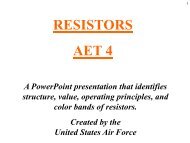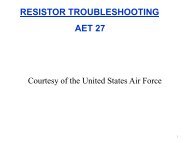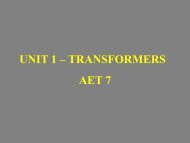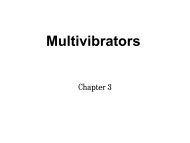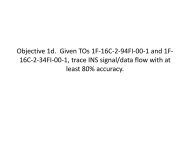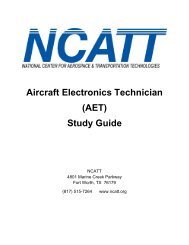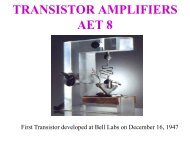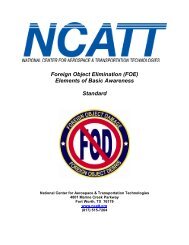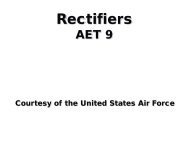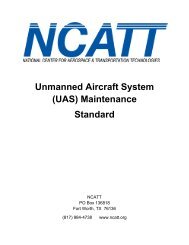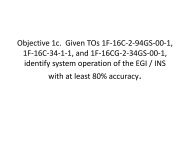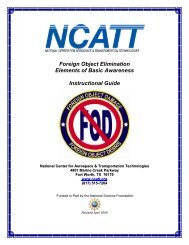Aircraft Electronics Technician AET - NCATT
Aircraft Electronics Technician AET - NCATT
Aircraft Electronics Technician AET - NCATT
You also want an ePaper? Increase the reach of your titles
YUMPU automatically turns print PDFs into web optimized ePapers that Google loves.
<strong>NCATT</strong> <strong>Aircraft</strong> <strong>Electronics</strong> <strong>Technician</strong> (<strong>AET</strong>) Study Guide<br />
o A counter is a flip-flop interconnection having an input that enables binary<br />
counting. Every time an input is received, the register changes in a regular pattern.<br />
Changes are also prearranged by the system<br />
• Frequency Division/Divider<br />
o Electronic circuit that takes an input signal with a frequency and generates an<br />
output signal with a frequency<br />
o Frequency dividers can be implemented for both analog and digital applications<br />
• Subtractor<br />
o Digital circuit that performs the subtraction of numbers<br />
o The most common subtractors operate on binary numbers<br />
Adders:<br />
Individuals should be able to explain the use and operation of adders with reference to the<br />
following terms:<br />
• Adder<br />
o Digital circuit that performs the addition of numbers<br />
o The most common adders operate on binary numbers<br />
• Full-adder<br />
o Digital circuit that performs an addition operation on three binary numbers<br />
• Half-adder<br />
o Digital circuit that performs an addition operation on two binary numbers<br />
II. Common Maintenance Practice<br />
22. Hazards / Safety Practices<br />
<strong>NCATT</strong> Level A<br />
Outcome: A successful education or training outcome for this task/subject will produce an<br />
individual who can identify basic facts and terminology related to common shop hazards and<br />
safety practices. The following is a minimum list of terms and task associated with this subject.<br />
RF Energy:<br />
There are OSHA standards, other federal standards, and national consensus standards relevant to<br />
radio frequency and microwave radiation. Individuals should be able to explain the use of RF<br />
energy, hazards, and safety programs with reference to the following terms:<br />
• Personal Protective Equipment (PPE)<br />
o The use of PPEs takes into consideration key factors involved in the identification<br />
of hazards to employees (inhalation, skin absorption, ingestion, and eye or skin<br />
contact)<br />
Copyright © 2012 by the National Center for Aerospace & Transportation Technologies. All rights reserved. Individuals may<br />
download, print, and make copies of this document for their own personal use. Commercial use prohibited.<br />
Page 31 of 60



